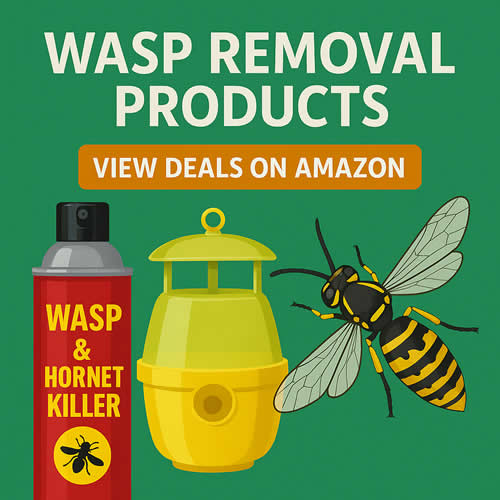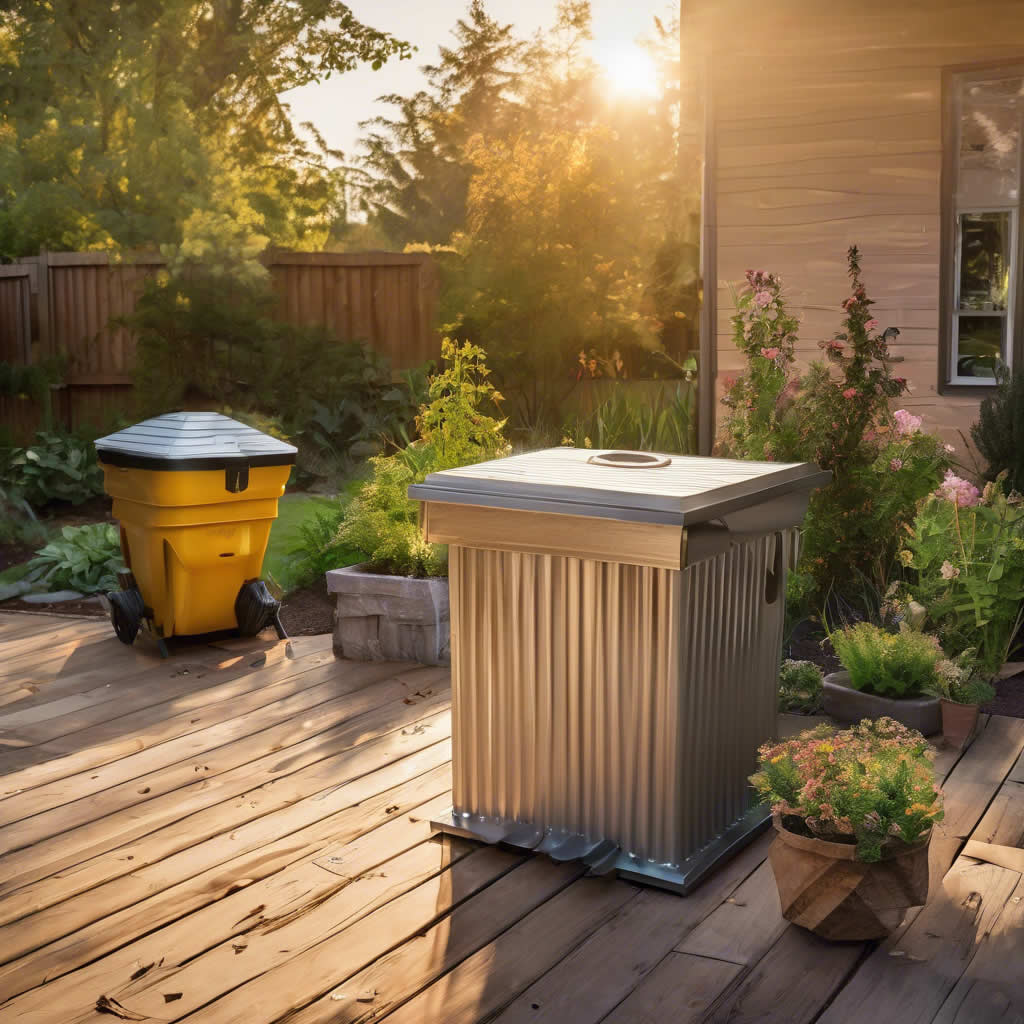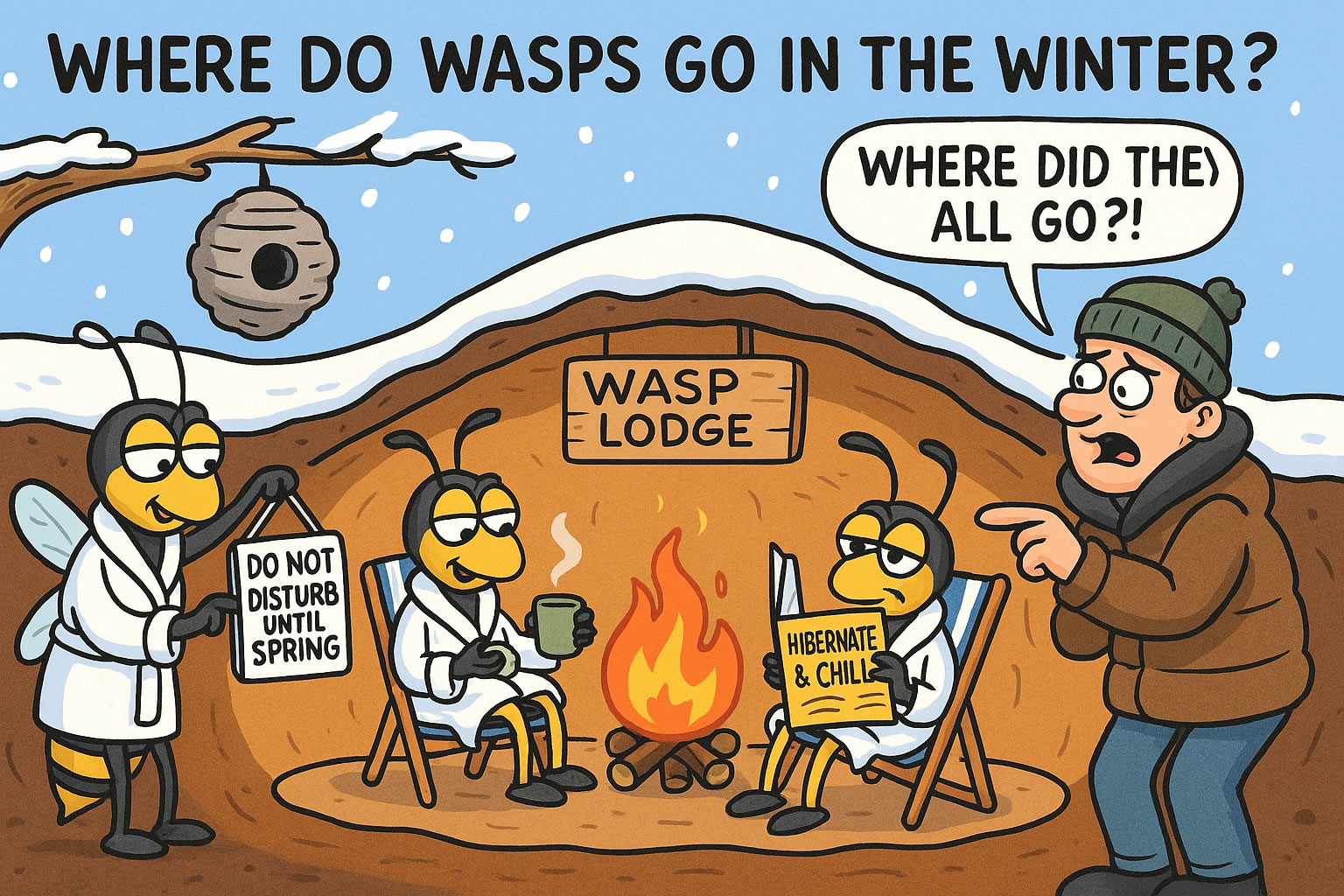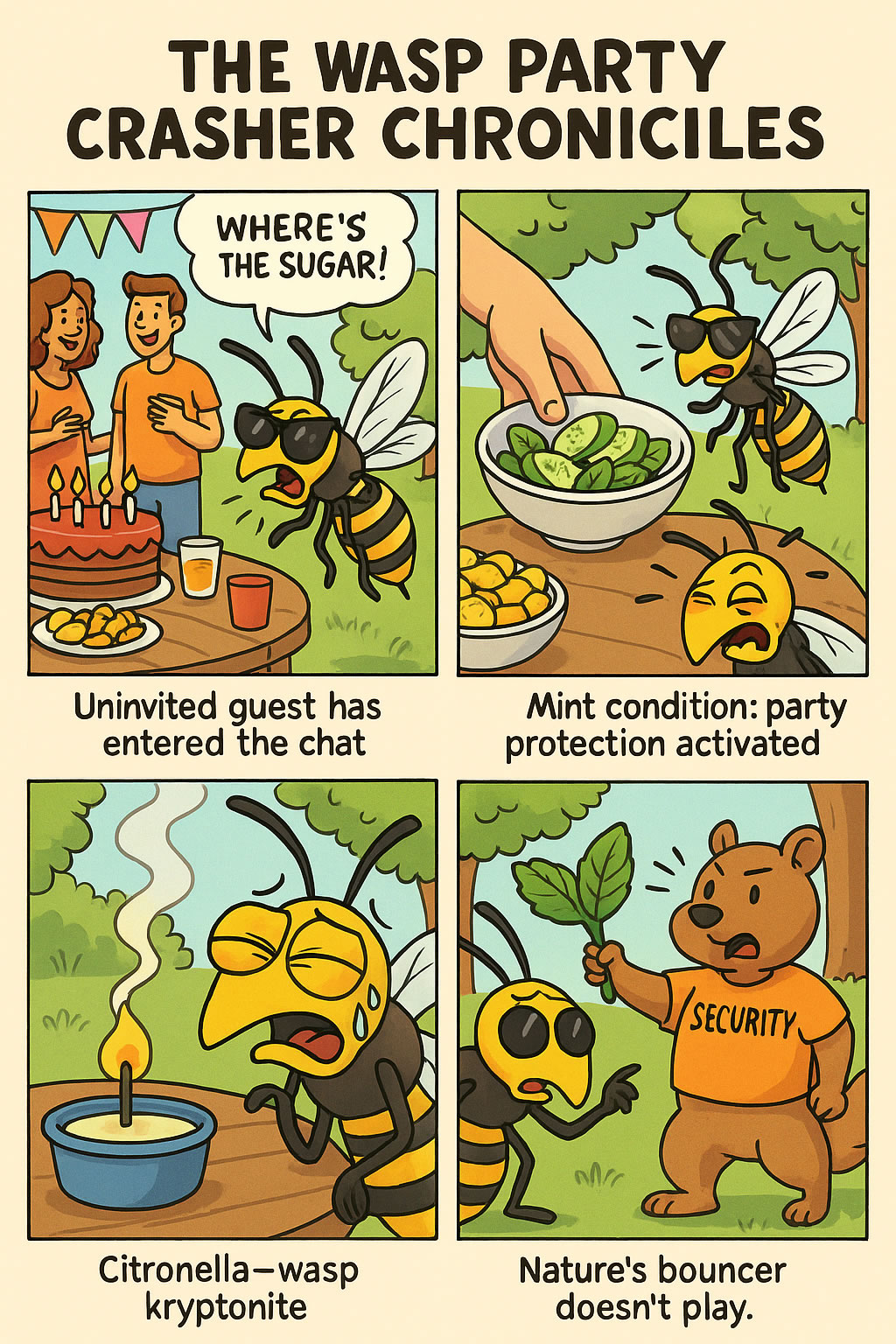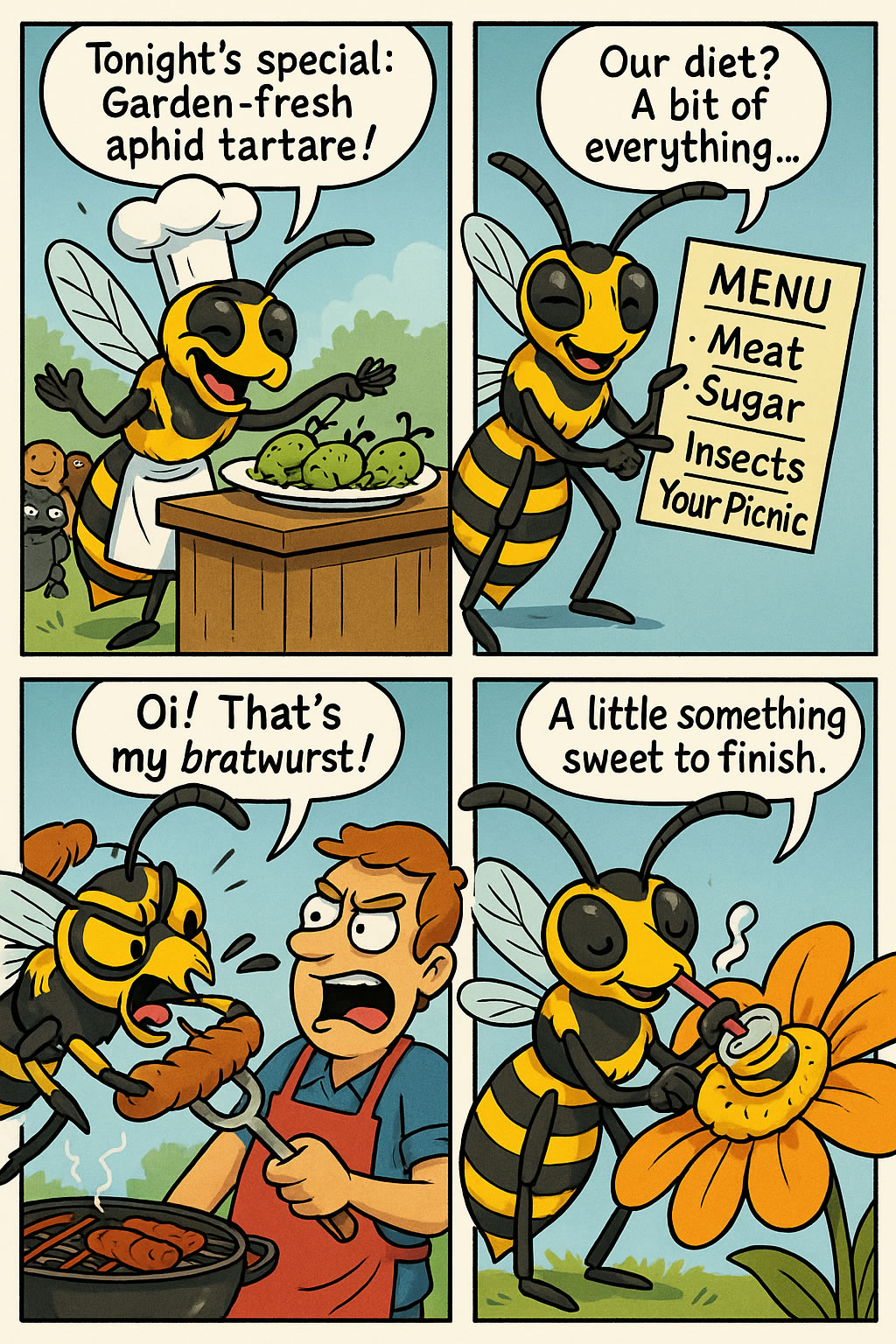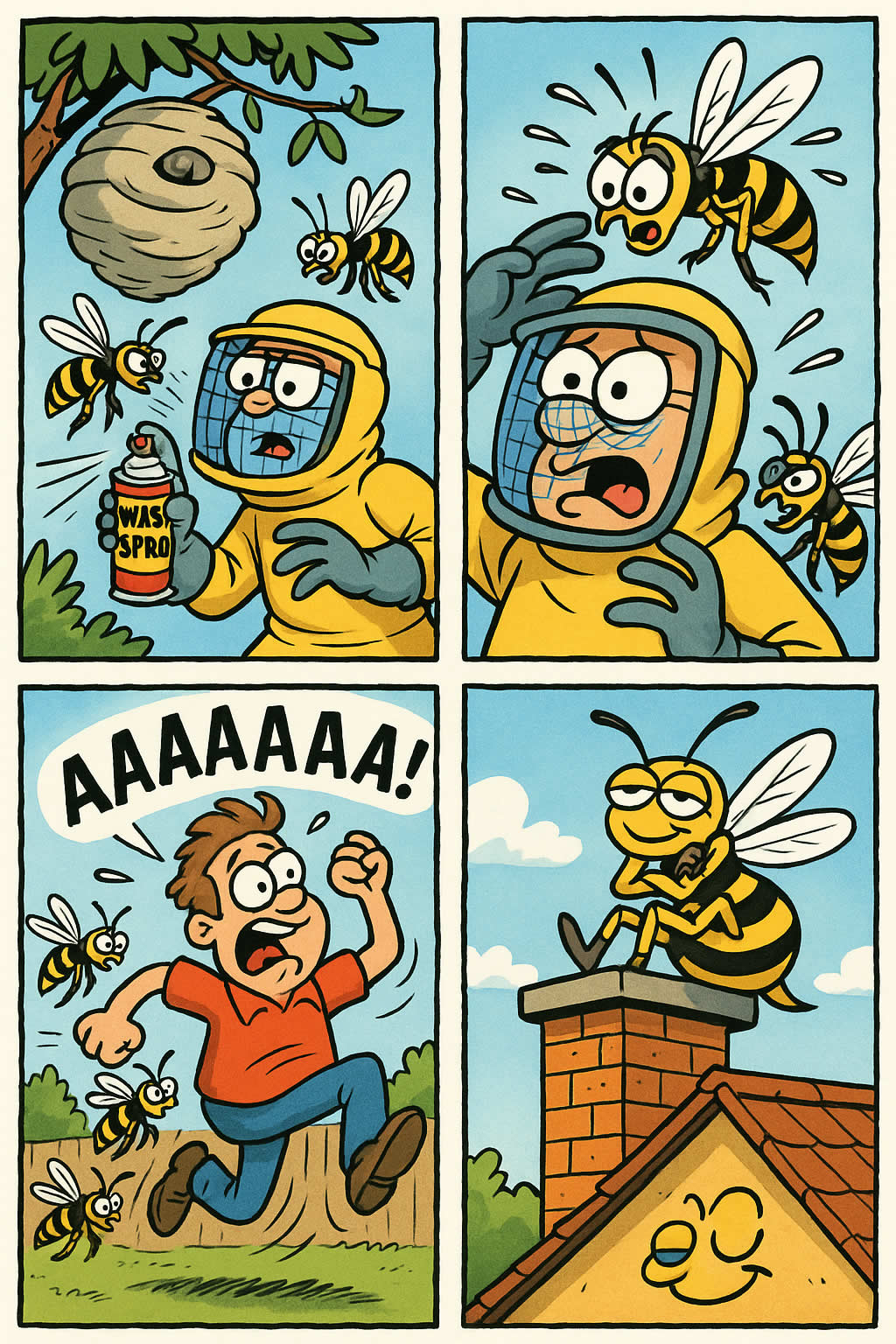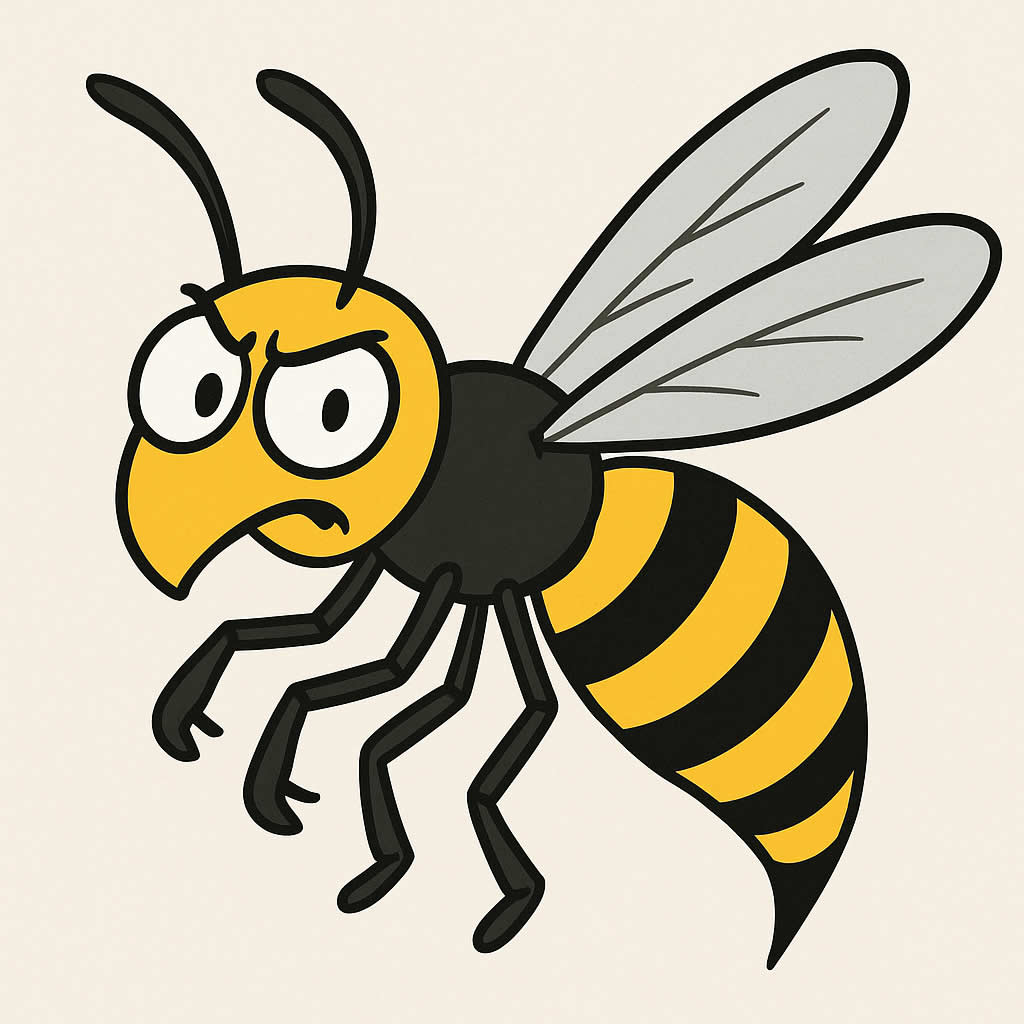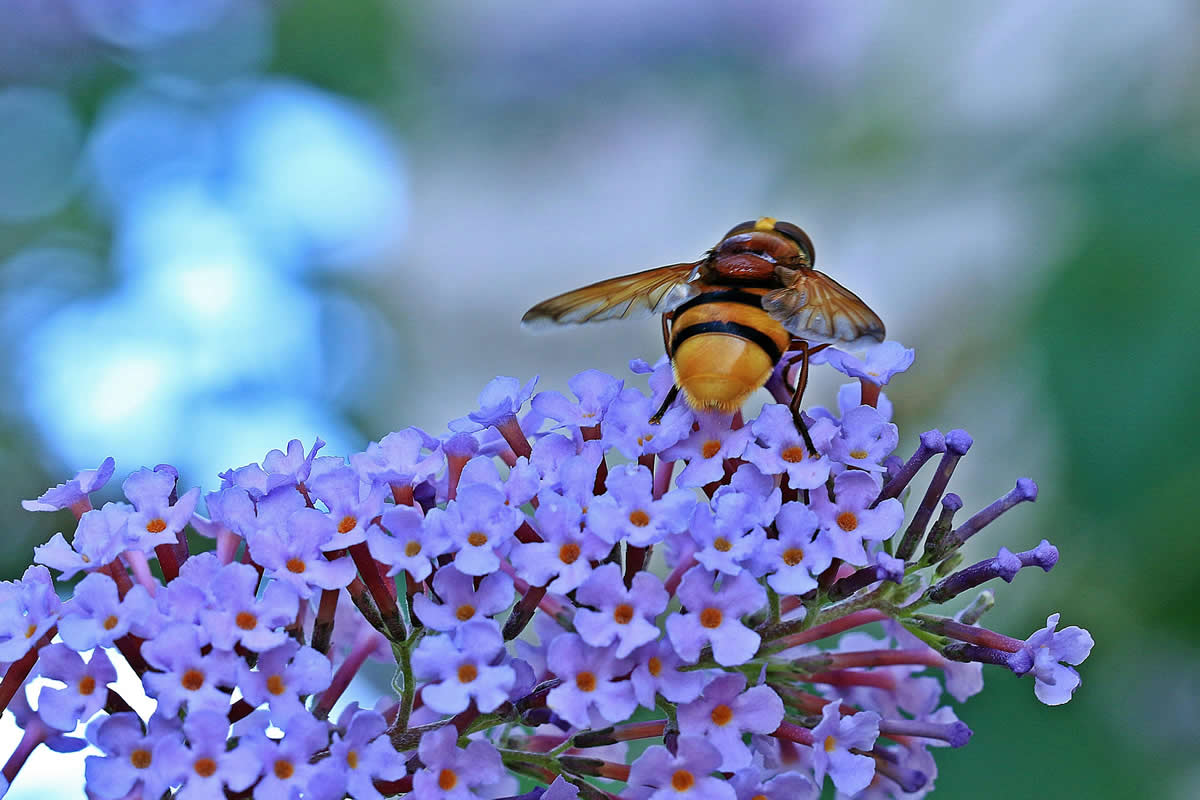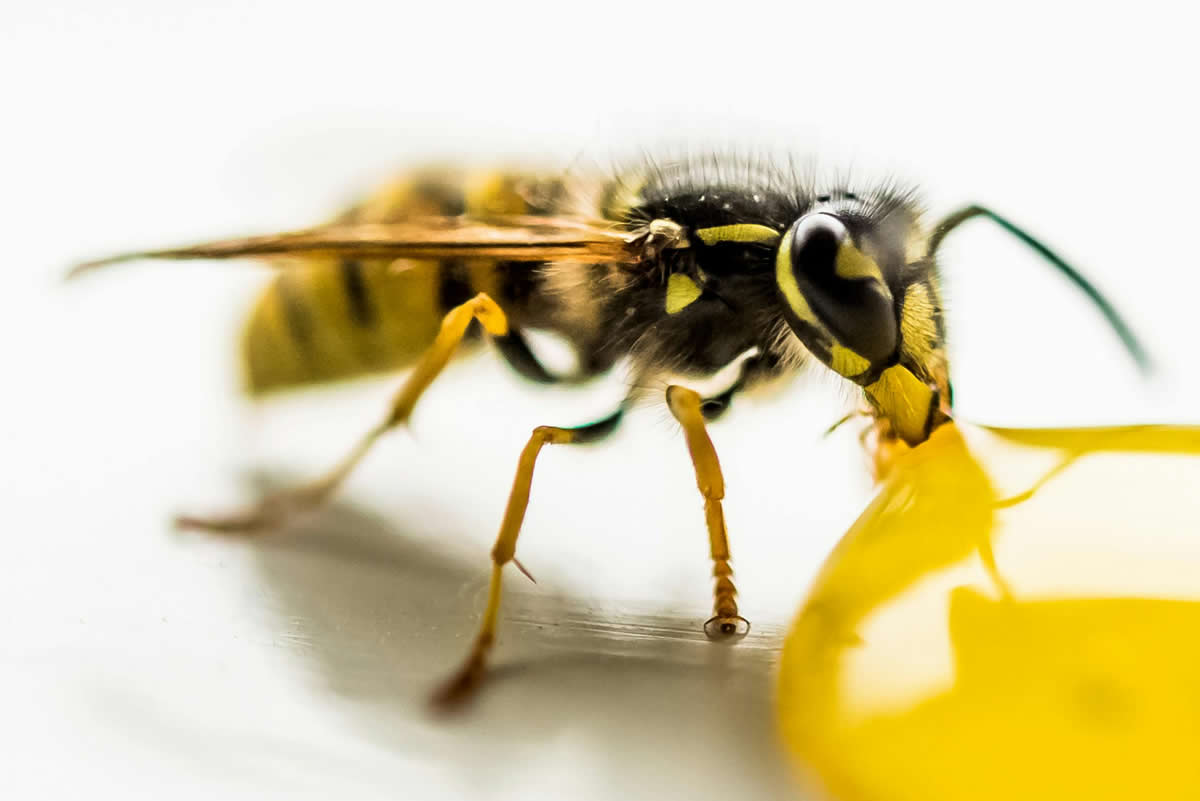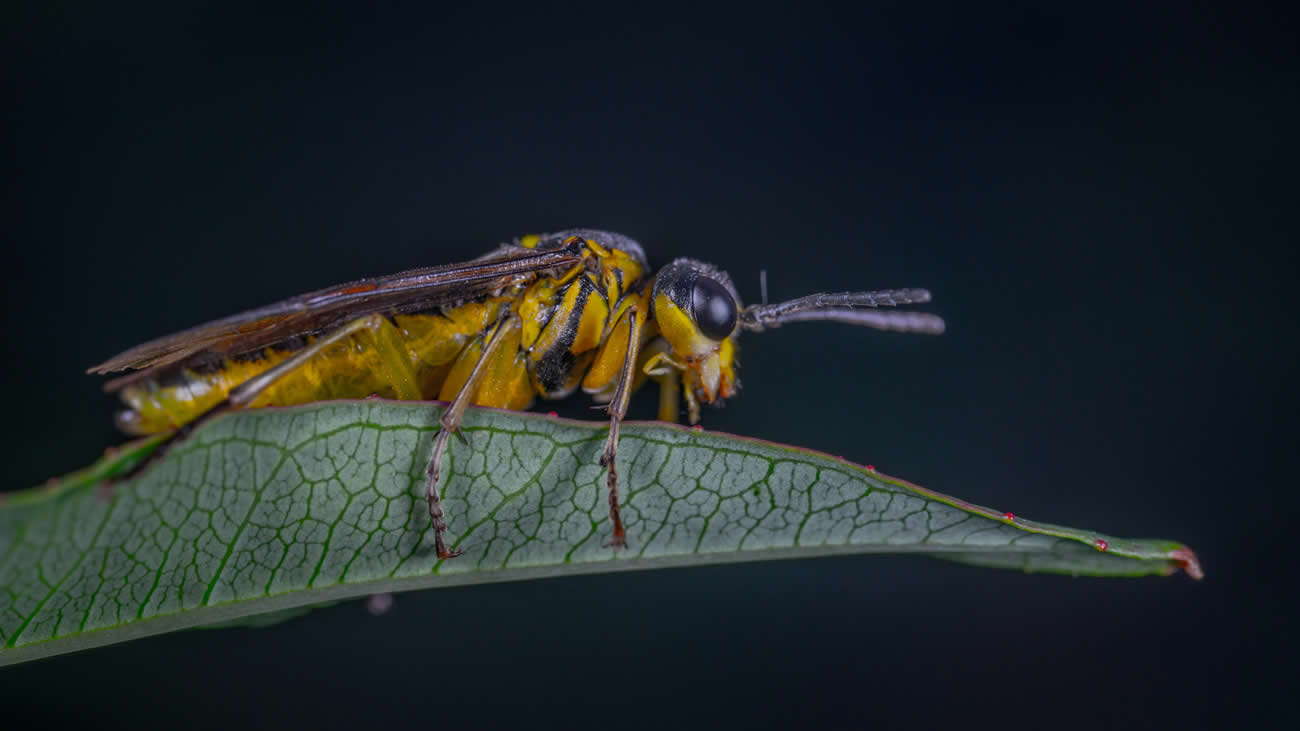Related Queries
ToggleDid you know there are approximately 9,000 different types of wasp species in the UK alone? These persistent insects, particularly yellowjackets, can sting repeatedly and cause serious allergic reactions.
If you’re wondering how to stop wasps from coming back to your property, you’re not alone. These unwanted visitors are most active during late summer and early fall when their colonies reach peak size. Though wasps typically abandon their nests after three to four months, new swarms may return to the same nesting grounds if left unchecked.
The good news is that we have several proven methods to keep these stinging insects at bay. From natural deterrents like peppermint and clove essential oils to smart prevention strategies such as covering rubbish bins and removing food scraps, there are effective ways to make your space less appealing to wasps.
In this guide, we’ll show you practical, tested methods to protect your home and garden from these unwelcome guests. Let’s explore how to create a wasp-free environment that lasts.
Identifying Wasp Risk Areas
Spotting potential wasp trouble spots around your property helps prevent future infestations. Understanding where these insects prefer to nest and what attracts them allows for better prevention strategies.
Indoor danger zones
Several areas inside homes attract wasps seeking shelter. Attics and basements often become prime nesting locations because of their quiet, undisturbed nature. Wasps frequently enter through gaps around utility pipes, vents, and cables. Furthermore, uncovered chimneys and dryer vents create easy access points for these insects to squeeze through.
Garages, especially those with doors left open for extended periods, become inviting spaces for wasp colonies. Additionally, wasps can hitchhike into houses on clothes or bags. Wall cavities and spaces behind window mouldings also serve as potential entry points, especially where there are small gaps.
Outdoor attraction points
Wasps demonstrate a strong attraction to specific outdoor features. Sweet-smelling substances and bright colours that resemble flowers particularly draw their attention. Standing water sources, including birdbaths and ponds, provide essential drinking spots.
Garden areas require special attention, specifically:
- Wooden decks and fences, which provide wood fibres for nest building
- Garbage bins and compost piles that offer easy access to food
- Areas with ripe fruit or sweet-smelling flowers
- Sheltered spots under eaves and porch ceilings
Signs of potential nests
Recognising early signs of wasp activity helps prevent full-scale infestations. A mature nest can house thousands of wasps, making prompt identification crucial. Key indicators include:
Firstly, observe increased wasp traffic, especially around specific areas of your property. Worker wasps following consistent flight paths often indicate a nearby nest. Moreover, persistent buzzing sounds, particularly from within walls or ceilings, suggest nest-building activity.
Another telling sign appears as black, damp-looking marks near room edges or dormer windows, caused by wasp larvae. Wasps harvesting wood from garden furniture or fence panels likewise suggests nearby nest construction.
Nests typically start small, approximately the size of a golf ball, but can grow to football size or larger. These structures feature distinctive papery walls made from chewed wood pulp and wasp saliva. Common wasp nesting locations include wall cavities, roof spaces, bird boxes, and garden sheds.
Seasonal Prevention Strategy
Timing plays a crucial role in preventing wasps from establishing colonies around your property. Understanding their seasonal patterns helps create an effective prevention strategy.
Spring preparation steps
Early spring marks the emergence of queen wasps from hibernation, typically around March in the UK. At this stage, queens actively search for suitable nesting locations to establish their colonies. Subsequently, taking preventive measures becomes essential.
Start by sealing potential entry points around your home, as queens begin constructing nests using wood pulp gathered from fence posts and garden furniture. Pay close attention to cracks in walls, roofing gaps, and openings around utility pipes.
Regular property inspections throughout spring help detect early signs of wasp activity. A newly formed nest appears greyish-brown and measures approximately the size of a walnut. Common nesting locations include:
- Lofts and eaves
- Inside sheds or garages
- Underneath decking
- Garden bushes
Summer vigilance tips
As summer progresses, wasp nests rapidly expand from egg-size to football-size structures. A typical nest can house between 20,000 to 25,000 wasps, necessitating increased vigilance and preventive measures.
On bright, sunny days, wasps show heightened activity. Conversely, cloudy or rainy conditions result in reduced movement. Never approach suspected nest locations with torches or lights, as wasps are naturally drawn to illumination.
By late summer, wasps shift their feeding preferences from insects to sugary substances. This behavioural change occurs after the queen lays her final eggs and the larvae mature. Without their usual food source, worker wasps become more aggressive in their search for sustenance.
To minimise encounters during this period:
- Cover food and drinks when dining outdoors
- Clear fallen fruit promptly to prevent fermentation
- Maintain sealed bin lids
- Consider installing mesh screens on windows and doors
Remember, wasps become defensive if they perceive threats to their nest. Guard wasps stationed at entry points can recognise colony members and will signal others to attack if they detect danger.
Smart Food Management
Food management plays a vital role in deterring wasps from your property. Understanding their dietary preferences helps create effective prevention strategies.
Proper waste disposal
Maintaining clean and sealed bins significantly reduces wasp attraction. Place bins away from doors and windows to slow food decomposition and minimise odours. Rather than dumping food directly into wheelie bins, use bin liners to prevent scraps from sticking to container sides.
For effective waste management:
- Keep compost bins properly sealed
- Replace cracked or broken bins promptly
- Empty bins regularly to prevent wasp colonies from establishing nearby
- Clean containers thoroughly to remove lingering food residue
Outdoor eating guidelines
Wasps exhibit distinct feeding patterns throughout summer. Early in the season, they hunt insects to feed their young, whilst later they seek sugary foods. Therefore, adjust your outdoor dining habits accordingly.
When dining outside:
- Cover food immediately after serving
- Move items that attract wasps 10-20 feet away from dining areas
- Clear leftovers and spills promptly
- Watch for scout wasps, as they alert their colony to food sources
Consider placing mesh covers over dining areas or using citronella-infused candles to deter wasps. Certain herbs like lemongrass, spearmint, sage, thyme, and rosemary naturally repel wasps. Growing these around eating areas creates an effective barrier.
Pet food considerations
Pet food management requires special attention to prevent wasp attraction. Wasps frequently congregate around pet water bowls, posing risks to animals. To protect pets:
- Avoid leaving pet food unattended outdoors
- Consider using mosquito netting around pet bowls
- Provide alternative water sources for wasps away from pet areas
- Clean spilled pet food immediately
For outdoor pet feeding areas, place sticky wasp traps nearby to reduce wasp activity. However, position these traps carefully to avoid endangering pets. Remember that some pets may have allergic reactions to wasp stings, making prevention particularly crucial in areas where animals frequently feed or drink.
Long-Term Prevention Methods
Physical barriers and strategic deterrents offer reliable, long-lasting solutions for preventing wasp infestations. These methods create an unwelcoming environment whilst maintaining the natural balance of your garden ecosystem.
Installing physical barriers
Stainless steel mesh stands out as a durable solution for blocking wasp entry points. Unlike standard materials, it withstands harsh weather conditions and resists corrosion. For optimal protection, install mesh screens over roof vents, windows, and other potential entry areas.
To ensure effective mesh installation:
- Cut the material with heavy-duty scissors or tin snips
- Secure corners and edges with appropriate screws or adhesive
- Keep the mesh taut to prevent sagging
- Inspect regularly for damage or wear
Beyond mesh barriers, seal any cracks or holes in your property’s exterior. Pay special attention to wall cavities, eaves, and ground-level openings. Nevertheless, avoid sealing existing nest entrances, as wasps might create new exits through vents or even chew through drywall.
Using decoy nests
Wasp territoriality offers an innovative prevention method through the use of decoy nests. These artificial structures exploit wasps’ natural behaviour, as they typically maintain a 200-foot distance from other colonies.
For maximum effectiveness, position decoy nests:
- Early in spring, before nest-building season begins
- Under eaves and in areas prone to wasp activity
- Approximately 200 feet apart for optimal coverage
Whilst commercial decoys are readily available, creating your own proves equally effective. Simply inflate a paper lunch bag, seal it, and hang it in strategic locations. Although decoy nests alone might not guarantee complete wasp prevention, they work effectively as part of a comprehensive deterrent strategy.
Regular maintenance ensures long-term success. Inspect physical barriers monthly for damage, clean mesh screens to remove debris, and replace weathered decoy nests as needed. Furthermore, combining these methods with proper food management and seasonal prevention creates a robust defence against persistent wasp problems.
Conclusion
Keeping wasps away from your property requires a well-planned, multi-faceted approach. Through proper identification of risk areas, both indoors and outdoors, you can spot potential nesting sites before wasps establish colonies.
Seasonal vigilance plays a vital role, especially during spring when queen wasps search for nesting locations. Smart food management, combined with physical barriers and decoy nests, creates an effective defence system against these persistent insects.
Remember that successful wasp prevention depends on consistency and regular maintenance. Checking mesh screens, maintaining sealed bins, and monitoring your property for early signs of wasp activity will help ensure a wasp-free environment throughout the year.
These practical steps, when implemented together, offer reliable protection for your home and garden against unwanted wasp visitors. Start applying these prevention methods today, and enjoy your outdoor spaces without worrying about wasp encounters.
Pest Control The Hyde – Pest Control Upper Staploe – Pest Control Woodside
